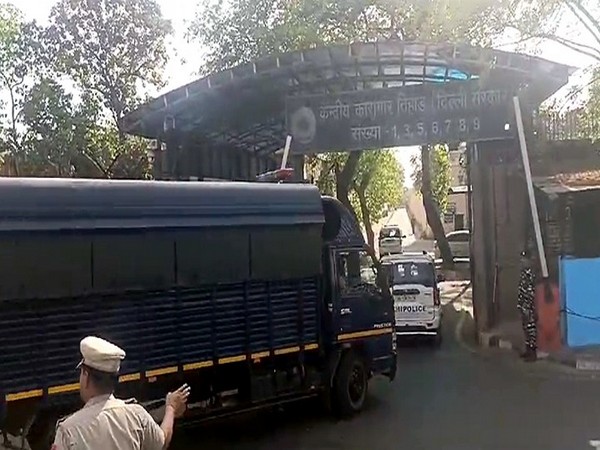India achieved 99 pc coverage of DPT3 vaccine in 2021 amid COVID pandemic: WHO
Aug 13, 2021

By Shalini Bhardwaj
New Delhi [India], August 13 : During the COVID-19 pandemic, India prioritised childhood immunisation programme as an essential service and achieved an all-time high coverage with DPT3 vaccine in the first quarter of 2021, said Dr Poonam Khetrapal Singh, Regional Director WHO South-East Asia Region on Friday.
Talking to ANI on the country's childhood immunisation programme, Dr Singh said India has also expanded the use of Pneumococcal vaccine despite the ongoing pandemic.
She said that the year 2020 saw a dip in coverage of childhood immunisation programmes globally and India was no exception. However, she said that India prioritised the childhood immunisation programme as an essential service and made concerted and persistent efforts to restore life-saving immunisation services.
"As a result, India achieved an all-time high of 99 per cent reported coverage with DPT3 vaccine in the first quarter of 2021. For a programme that caters to 30 million pregnant women and the world's largest birth cohort of 26 million, this is unprecedented and commendable. Globally DPT3 is a proxy indicator for immunisation coverage. In India DPT3 coverage is equivalent to three doses of pentavalent vaccine that protects against diphtheria, pertussis, tetanus, and hepatitis B and Haemophilus influenzae type b (Hib)," said WHO's South-East Asia Director.
"Additionally, India has expanded the use of Pneumococcal vaccine despite the ongoing pandemic. The vaccine is now being administered in 24 states, as part of nationwide scale-up by the end of the year," Dr Singh added.
Talking about the reasons behind the initial decline in the childhood immunisation programme at the start of the pandemic, the WHO Regional Director said, "There have been multiple challenges to the childhood immunisation programme - vaccinators were redirected towards COVID-19 pandemic response, restrictions on movement occurred due to lockdowns, vaccinators fell sick or were in quarantine, there was fear of COVID-19 among the community. All these contributed to a temporary decline in childhood immunisation coverage in the country."
She said India took strong measures to overcome the challenges and revive the vaccination of children and declared immunisation as an essential health service.
"Micro-plans were modified to identify immunisation sites beyond containment zones and COVID-19 care centers. Guidelines were issued for safe vaccination during the pandemic. Staggered vaccination was undertaken to maintain social distancing and COVID-19 appropriate behaviour were reinforced," she informed.
WHO supported health authorities train nearly 1.6 million ANMs and ASHAs on COVID infection prevention and control, which helped in resuming safe immunisation during the pandemic in India.
Dr Singh noted that community mobilisation efforts were reinforced with a special focus on assuring people of safety measures at the vaccination sites and the continued need for people to provide life-saving vaccines to their children during the pandemic.
"And this process is ongoing. WHO continues to work with the health authorities at all levels to support a better understanding of impediments to immunisation services and measures to expand coverage. Recently, WHO supported a deep dive exercise to review immunisation programme performance in 14 districts of 7 states. Results of such focused approach will help further guide and improvise efforts," she added.
When asked about challenges for India's childhood programme the WHO Regional Director said the country has a mature immunisation programme.
She recalled India's polio eradication efforts and said though it was prolonged by multiple challenges, they were marked by innovative initiatives which the country has been applying to the childhood programme to expand coverage and reach the most vulnerable and underserved population in hard-to-reach areas.
Dr Singh noted that government's initiatives such as Mission Indradhanush have helped increase immunisation coverage.
"Measures are being taken to identify and reach missed children. WHO has helped in the identification of 250 high-risk districts for intensified Mission Indradhanush and another 192 medium risk districts for states to focus efforts for improvement of immunisation coverage. Dedicated state and district task forces are closely monitoring the implementation of immunisation programme with over 2000 WHO personnel and partner organisations supporting the programme on the ground," she said further.
She also noted that India is making commendable efforts in childhood immunisation.
"Its dedicated workforce of nearly 2.2 million vaccinators and mobilisers, are working tirelessly despite challenges compounded by the pandemic to reach every last child, reflecting the commitment of the country to protect its population against vaccine-preventable diseases," she added.
The WHO South-East Asia Technical Advisory Group for Immunisation, which met earlier this week, commended India's plan for catching up on immunisation. The expert body also commended the country for successfully implementing the COVID-19 vaccine roll-out and progressively increasing the vaccine coverage. It lauded the ongoing efforts by India to monitor large numbers of COVID-19 vaccination session sites and take corrective actions accordingly.

















